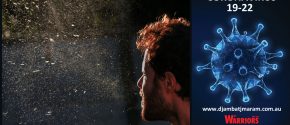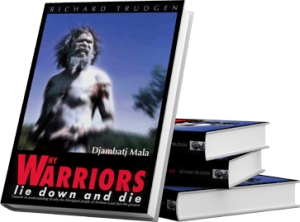8. Are there 2 diseases with 2 different names?
This program looks at the meaning of coronavirus and COVID-19. Many Yolŋu people are confused because two names are being used in the media: coronavirus and COVID-19. The question being asked is, “are there two diseases?”
This program looks at the meaning of coronavirus by working through the history of the word ‘corona’. It explores the Latin and Greek roots of the word. This is very important for the Yolŋu population because they don’t have any connections to the Latin or Greek roots in their language, so it is impossible for them to decipher the word otherwise. This leads to suspicion amongst Yolŋu that the whole COVID-19 discussion is something that’s been manufactured by somebody as a joke.
9. Meaning of the name COVID-19
This program focusses the meaning of the name COVID-19 and where it comes from. It breaks down the construction of the name. CO means ‘corona’. VI means ‘virus’. D equals ‘disease’, and 19 is when the disease started, in China during 2019.
10. Who is WHO?
This program answers the questions Yolŋu have about the World Health Organisation (WHO) and its role in the coronavirus pandemic.
WHO has 150 countries who are members and is responsible for the health and well-being of all its members states. This program gives Yolŋu people more background information on the policies of WHO and looks at the conversations that are currently occurring in the mainstream media.
11. Has this virus, COVID-19, been here before?
In this program, the question is raised if the COVID-19 virus has occurred before? COVID-19 is explained as a new disease that humans have not seen before and compares it to the Spanish flu of 1918. The Spanish flu killed over 50 million people around the world.
The history and effects of the Spanish flu on Yolŋu people in north-east Arnhem Land is then discussed. At the time of the Spanish flu, an entire generation of Yolŋu people along the coast died unexpectedly. When this occurred, Yolŋu blamed it on sorcery or other acts performed by neighbouring clan groups.
However, as Yolŋu were coastal people and had regular contact with British-owned Malay-crewed boats in their waters, historians believe the numerous deaths were caused by the spread of Spanish flu.
For Rev. Dr. Djiniyini Gondarra, who is speaking in the program, his grandfather died from Spanish flu, and this history is a shock to him because he knows about the deaths of the elders at that time, but has never heard of the Spanish flu. He says the discussion about the Spanish flu brings home the severity of this COVID-19 pandemic.
Click here for the full Covid:19 playlist
Other education programs in Yolŋu Matha are available on the Why Warriors YouTube channel or via the Yolŋu Matha learning platform, www.djambatjmarram.com.
These COVID-19 resources are produced by Rev Dr Djiniyini Gondarra, Richard Trudgen and Dr Kerry Mills. Thank-you to © Helix Animation 2020 for the animations provided. All rights reserved.



